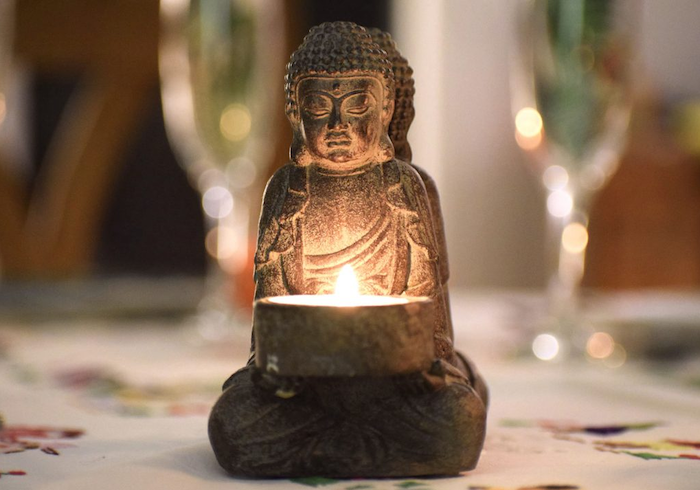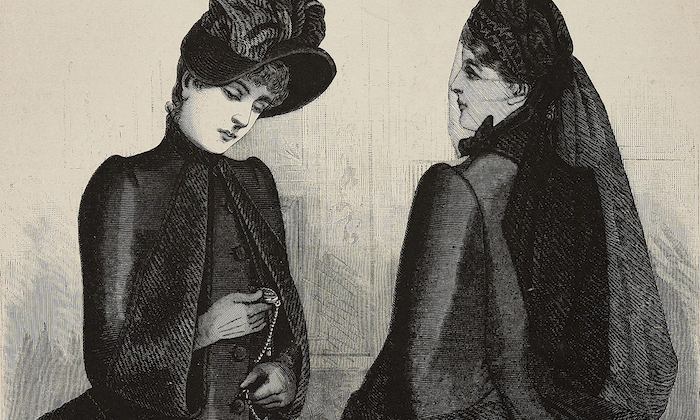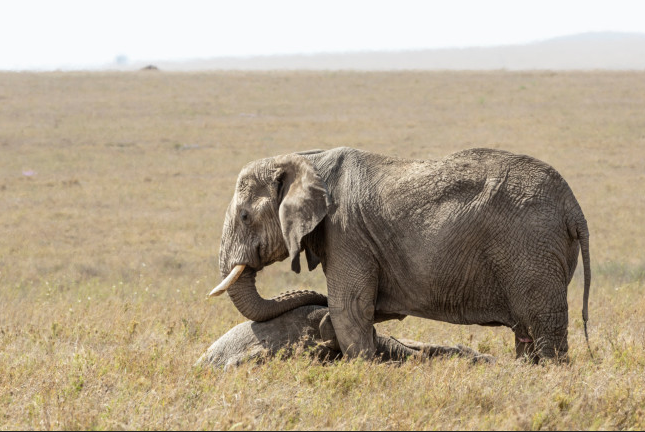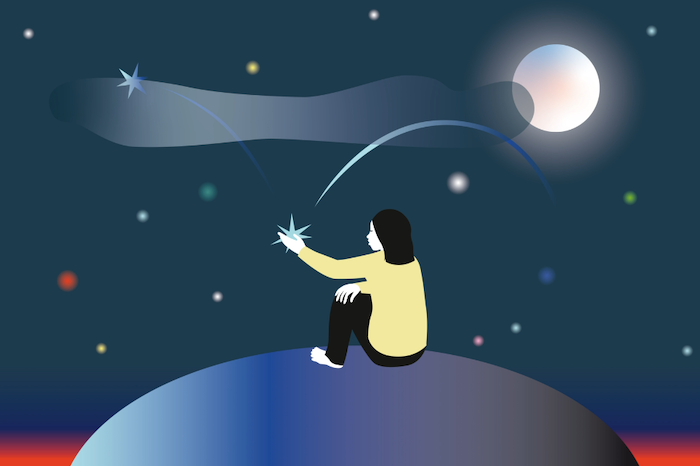The death of a much-loved dog is sometimes followed by regrets and self-doubt.
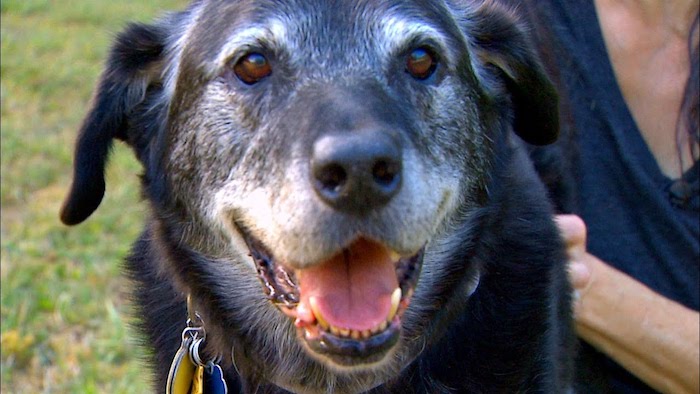
Will was distraught after his dog, Ray, died. Though Ray had been slowing down and sleeping more, Will had passed it off as normal, signs that his trusted buddy was simply getting older. By the time the vet diagnosed cancer, there was little that could be done.
Looking back, Will blamed himself for not getting Ray to the vet sooner—“He was counting on me and I let him down.”—and kicking himself for not being able to afford additional diagnostics, much less treatment. “I just didn’t have that kind of money and it’s tearing me up inside.”
He couldn’t shake memories of Ray’s death, or stop the self-critical thoughts that brought guilt and a sense that “I’ll never be able to forgive myself.”
Moral Pain
When we lose a canine companion, these kinds of thoughts and feelings may become a part of our grief. Though rooted in positive values such as loyalty, protectiveness and a commitment to our dog’s well-being, these values can also leave us in moral pain when we believe that we have failed to live up to them. According to Brandon Griffin, PhD, “Moral pain may be attributed to an event or series of events that a person views as a gross transgression of his or her moral beliefs and values, such as when we violate our own values by what we did or failed to do.”
In his book, The Loss of a Pet: A Guide to Coping with the Grieving Process When a Pet Dies, Wallace Sife, PhD, points out that caring for an animal companion involves “a complex set of responsibilities” in some ways “similar to the obligations of raising a child.” Given that we cannot always protect our dogs from suffering and may have to make decisions about when to end their lives, there may be times when we second-guess ourselves and wonder how well we have fulfilled these responsibilities.
In our grief, we may disproportionally focus on our perceived failures and imperfections rather than view our actions as those of someone doing her or his best to stand by a canine loved one during painful circumstances. Thus, when a dog dies, Sife observes, we may “need to consider the feelings of guilt and failed obligation that almost always crop up during intense bereavement for a pet.”
Often, moral pain abates as we process our grief. There are times, however, when it persists. When this happens, it may indicate deeper issues such as depression, anxiety or what counseling professionals call moral injury. According to the Moral Injury Project at Syracuse University: “Moral injury is the damage done to one’s conscience or moral compass when [one] perpetrates, witnesses or fails to prevent acts that transgress one’s own moral beliefs, values, or ethical codes of conduct.”
People struggling with moral injury may feel intractable shame, guilt, anger and/or remorse. They may experience unwanted and intrusive memories of painful events or harbor a sense of being morally defective. Over time, moral injury can lead to social isolation and a diminished sense of self-worth.
When it comes to our canine friends, there are many potential sources of moral pain. When a dog is sick or injured, we cannot talk with them about what is going on. We can’t get their input and involve them in decision-making. The pressure is on us to make painful but necessary decisions, which may involve euthanasia or treatments that temporarily cause suffering. Under such pressurized circumstances, it’s easy to agonize about what to do and to criticize whatever choices we make.
Veterinary social worker Jeannine Moga points out that dogs can be very stoical and mask underlying physical issues until they are advanced. “Diseases can progress in their bodies before they start to show overt signs of illness. Add to that the significant expense of veterinary diagnosis and treatment, and people can be faced with animal losses complicated by unknown causation, questions of ‘Why didn’t I see it?’ and worries that they’ve somehow failed to take adequate care of their companions.”
The decision for euthanasia, even when done to alleviate suffering on the recommendation of a veterinary professional, can be a source of acute moral distress. In their book, The Pet Loss Companion: Healing Advice from Family Therapists Who Lead Pet Loss Groups, Ken Dolen-Del Vecchio, LCSW, MFT, and Nancy Saxon-Lopez, LCSW, reflect on painful questions that arose after euthanizing a beloved cat.
Had we waited too long and prolonged his suffering unnecessarily? Had we put enough thought into the decision to end his life? Should we have taken him home and thought it over more carefully? Should we have sought another opinion? … Should we really have stayed with him when the vet put him to sleep? Did Reggie think that we killed him? Should we instead have said our goodbyes and left the room until he was gone?
According to Maryjean Tucci, MSEd, MDiv, lead bereavement coordinator for a hospice program and coauthor of A Peaceful Path: A Supportive Guide Through Pet Loss, decisions about euthanasia can raise other moral concerns. “When a person’s religious beliefs are such that they believe they are killing their pet by ending their life in an unnatural way, moral distress may play a role in their grief.”
“There are times,” Tucci continues, “when individuals may not understand the medical implications of what is happening to their pet and therefore are unable to make a clear decision on the process of euthanasia. If a pet partner experiences their pet struggling when their pet is being euthanized, this may cause an interruption of their grief experience by thinking they may have made the wrong decision. This is also true if the pet rallies and is perky just before the injection.”
There may be moral anguish if a grieving person looks back and concludes that they failed to understand the extent of an animal’s suffering and/or put off making a decision about euthanasia because it was too painful. In such instances, humans may blame themselves for allowing a pet to suffer. “When this occurs,” Tucci says, “there can be extreme feelings of guilt and low self-worth.”
Circumstances specific to an individual dog’s death may also cause moral pain—for example, the dog who escapes through an open door and is hit by an automobile, or the dog euthanized against an owner’s wishes due to aggressive behavior shown to a neighbor.
I worked with a patient who had no one to adopt her aging and infirm Beagle, Rosie. Days before we met, she made the heartbreaking decision to end Rosie’s life in order to save her from being abandoned and feeling unwanted. Though this client was terminally ill, much of my counseling with her focused on the moral pain of this decision despite the loving intention behind it.
Sometimes moral pain has nothing to do with the specifics of the death. For example, I worked with a woman who was providing care for her dying mother, which left her little time for her 14-year-old Basset Hound. “I was so stressed by Mom’s care that I just wound up ignoring him. He started having occasional [urinary] accidents, and I found myself getting impatient and yelling at him. I even had occasional thoughts that it would be easier if he were gone.”
When her dog needed to be euthanized, she felt at peace with the decision but agonized over having lost her temper in moments of frustration. “I feel horrible. I worry he might have thought I didn’t love him anymore or that I wanted him to die. I wish I could have that time back.”
Ritual and Remembrance
When grieving for a beloved dog, it’s important to have opportunities to share one’s grief and, if desired, engage in rituals that honor and help make sense of the loss. Unfortunately, some who have lost pets find that such opportunities for rituals and support are rare, even nonexistent.
When it comes to our canine companions, says Tucci, “Families, friends and society do not always recognize this loss as important or legitimate. Statements from others such as: ‘This wasn’t a child,’ or ‘The impact isn’t as bad as losing a sibling or a parent,’ minimize the loss for the person experiencing grief.”
She likens this to what Kenneth Doka, PhD, calls “disenfranchised grief.” In his book, Disenfranchised Grief: Recognizing Hidden Sorrow, Doka describes situations in which the significance of a loss goes unrecognized, unacknowledged or is dismissed by others—situations for which there is no recognized social or communal context in which to express one’s grief and receive support.
Feeling isolated in one’s grief can intensify the suffering of moral pain by presenting barriers to processing one’s thoughts and feelings as well as to receiving reassurances from a caring other. Attempting to grieve in isolation can complicate such pain and even cause some to wonder if there is something wrong with them. Sometimes, this isolation is experienced as abandonment, even betrayal, by those from whom a grieving person expected compassion.
In “Grief and Moral Injury,” a blog post about his grief following the death of his German Shepherd, psychologist David Fisher, PhD, describes feeling abandoned by those he counted on for support and understanding. Having no one to “witness” his “inconsolable grief,” he writes, significantly intensified his pain.
Over time, moral pain typically lessens as we grieve and gain perspective. For those who are struggling with this kind of pain, the suggestions that follow may be helpful.
• Give yourself a break. Moral pain comes from caring about doing the right thing and wanting the best for your dog. If you did not care, you would not be feeling this kind of pain. Sometimes, there are things we don’t recognize or cannot control. We may need to make decisions under duress. Intense emotions and conflicting responsibilities can make these decisions very difficult, and whatever we decide, we may criticize ourselves. Acknowledge the difficulty of this kind of pressure and let yourself be human.
• Find someone with whom you can talk. If you don’t have someone, think of somebody in your life, even if they are no longer alive, from whom you have felt love and compassion. Imagine they are in the room with you and tell them what you are thinking and feeling. Imagine their response.
• Get creative. Some people find it helpful to write in a journal. Some write poetry or letters to their dogs, telling them what is in their hearts. Others express their feelings and honor connections with deceased dogs through other forms of creative expression, including music, art, storytelling, play, humor or dancing.
• Share the story. As we tell the story of our dog’s life, even if it’s just to ourselves, we see the longer journey we had with our pet, not just the last weeks, days or hours. When we place end-of-life events in the larger context of a friendship that may have unfolded over years, we remember good times and moments of connection and warmth that may have been minimized or forgotten in the midst of our pain.
• If desired, create formal or informal rituals to honor your dog’s life and affirm the enduring meaning of the relationship. Tucci says these kinds of rituals “legitimize the grief experience and reflect the importance of the pet in this person’s life. This also becomes part of the letting go and moving forward process necessary in the healing of grief.”
• Be mindful. It’s easy to get caught up in negative thoughts and beliefs. Being mindful means paying attention to what we are thinking, sensing and feeling in the present moment without avoiding, judging or identifying with negative states. In his book, The Mindful Path to Self-Compassion: Freeing Yourself from Destructive Thoughts and Feelings, psychologist Christopher Germer, PhD, observes that “it seems that the more intense our emotional pain is, the more we suffer by obsessing, blaming ourselves or feeling defective.” He recommends bringing gentle attention to our inner experience and responding with self-compassion, “taking care of ourselves just as we’d treat someone we love dearly.”
• Beware of cognitive distortions. Part of mindfulness is being aware of our thoughts and what we are telling ourselves. When doing this, it’s important to be on the lookout for what psychologists call cognitive distortions. These are ways our minds convince us of things that aren’t true and unconsciously reinforce painful beliefs that keep us feeling bad. There are dozens of cognitive distortions, including personalizing, black-and-white thinking and negative mental filtering.
For example, emotional reasoning refers to a belief that if you feel something, it must be true. If you worry that your dog was angry at you or felt unprotected because you discovered too late that she was sick, you assume it’s true even though it’s not. The key to not getting hooked by cognitive distortions is to notice when they are occurring and gently “talk back” to them. “Oh, I’m falling into the trap of emotional reasoning. I feel sad about what happened, but Maggie was good at hiding when she was in pain. She knew how much I loved her.”
• Don’t confuse regret, guilt and shame. This is easy to do. In simple terms, regret is a sense of sadness that things turned out the way they did. It can convey a wish that we had understood a situation better so that we could have done things differently. Guilt refers to a belief that we knowingly did something that violated our code of ethics. Shame takes guilt to a whole new level by replacing the belief “I did something that was bad” with “I’m a bad person because of what I did.”
It’s easy to confuse these experiences. If you’re feeling intense regret, it’s easy to start blaming yourself. Before you know it, regret can turn into guilt and guilt can lead to shame. If you’re feeling shame, ask yourself, “Could this really be guilt?” If you’re feeling guilt, ask yourself, “How much of what I’m feeling is really regret?”
• Tend to your body and spirit. Moral pain doesn’t just affect your heart and mind. It’s important to take care of your body by getting exercise, rest, and practicing good nutrition and sleep habits. If you have a faith tradition or spiritual/contemplative practice, these can be sources of strength, comfort and perspective.
At times, moral pain can be intensified by destructive messages we’ve received and internalized at some point in our lives, often as children. Messages like, “I’m not good enough,” “I can’t do anything right,” “I have to be perfect,” “It’s my fault when something goes wrong” or “It’s my job to make sure everyone is safe/happy.” Readers for whom this registers are warmly encouraged to find a safe context, possibly with a caring professional, to explore and gain perspective on these messages.
Don’t be afraid to ask for professional help or to join a support group. It’s okay to reach out to a psychotherapist, clergy person or professional bereavement counselor. Many counselors understand this kind of pain and how deep the grief can be for a deceased animal companion.
Complete Article ↪HERE↩!

